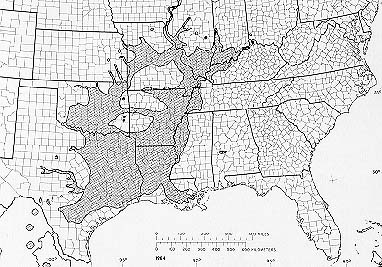There are two types of gardeners I encounter on a regular basis; those who are interested in edibles, and those who are interested in natives.
I’m interested in both. Since many natives are excellently adapted to the climate, if they bear something edible – I want them.
What needs to happen is for Mr. Native to marry Miss Edible… and then we’ll have a wedding of no-care delicious.
So… are you ready? Let’s take a look at a few good native edible fruit and nut trees, starting with a classic.
Pecans
Pecans are a staple of the south, though they’re not exclusively a southern tree.
Thomas Jefferson and George Washington both planted pecan trees on their properties, since they were rightly enthusiastic about this uniquely American nut.
They’ll adapt across a wide range of growing zones. According to some sources, they’ll even manage up into Canada.
As a nut, the pecan is buttery and delicious. Trees aren’t always easy to come by, but nuts can be germinated pretty easily, though it allegedly takes a decade or more for the resulting seedlings to bear. You’ll also want to plant two trees to ensure pollination.
Once established, pecans need only moderate care. Watch out for tent caterpillars in the spring.
Though they take a while, pecans are worth planting. The trees are attractive hardwoods that provide shade in summer and a good yield of high-value nuts in the fall.
Mayhaws
 Across much of the nation you’ll find a variety of native fruit trees in the Crataegus (Hawthorn) family. The small, apple-like fruits are named “mayhaws.”
Across much of the nation you’ll find a variety of native fruit trees in the Crataegus (Hawthorn) family. The small, apple-like fruits are named “mayhaws.”Mayhaws are edible raw or cooked, but are most commonly used to make delicious jellies.
Check with your local wild forager or Native Plant Society to see which mayhaws you can grow in your area. The trees are tough, though most varieties tend to like moist conditions.
If you miss picking the fruit, be assured that your local bird population will happily stand in the gap on your behalf.
Beyond being a useful edible, Hawthorn trees also have medicinal value in the treatment of heart disease.
Mulberries
It’s no secret that I love mulberry trees.
Unfortunately, many of the mulberries that are grown here are not the native “red” mulberry that first greeted the colonists. Our native variety (Morus rubra) is threatened by cross-breeding with introduced species from China and Europe. All the more reason to plant one.
The tree grows quickly and the fruit is delicious and abundant, plus they’ll grow from New York to Miami, so chances are you can grow one in your yard.
Chestnuts
Chestnuts used to be the reigning nut-producing powerhouse of the great North American forests… until the Chestnut Blight wiped out almost every single specimen across the nation in the early 1900s.
Fortunately, some headway has been made in blight-resistant varieties. One notable cultivar is the Dunstan chestnut. I’ve planted four of them in my yard so far. The nuts are large and sweet enough to eat raw, plus the trees are attractive. Chinese varieties are smaller with variable nut quality, so why not plant natives?
(CLICK HERE to discover two more species over at The Prepper Project.)




2 comments
I moved here five years ago from the hills of Eastern Kentucky. We always collected wild greens in early spring. I have not seen many here that I recognize. Would like to know more about edible greens in Central Florida.
You may want to look into Green Dean’s http://www.eattheweeds.com. He is based in Florida. Many “northern” greens are winter annuals in the Deep South. Pokeweed (toxic at the wrong stage), amaranth (pigweed), and supposedly sochan (Rudbeckia lacianata) would be found in both areas. I remember Smilax (greenbrier), Bidens alba, and Tradescantia virginiensis as being rather abundant in North Florida.
Comments are closed.